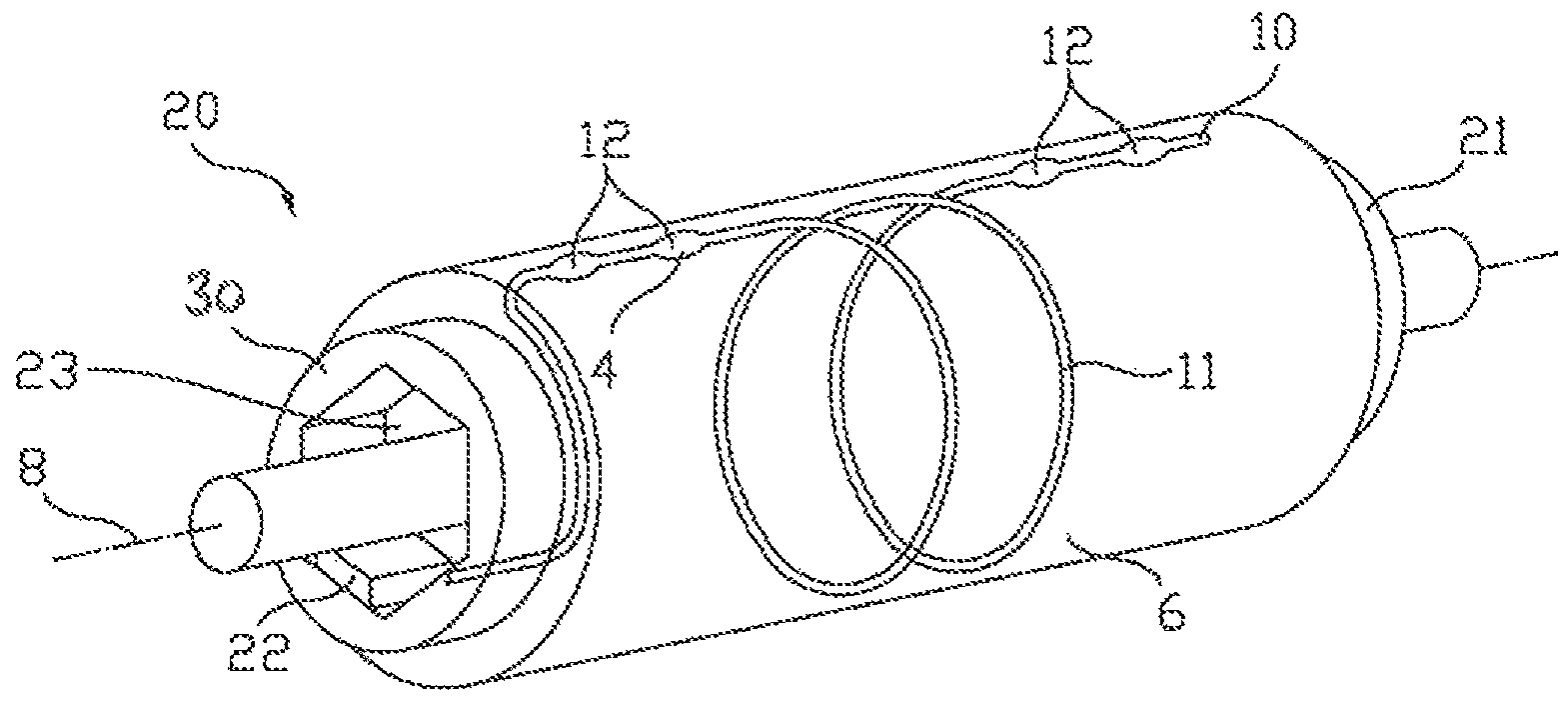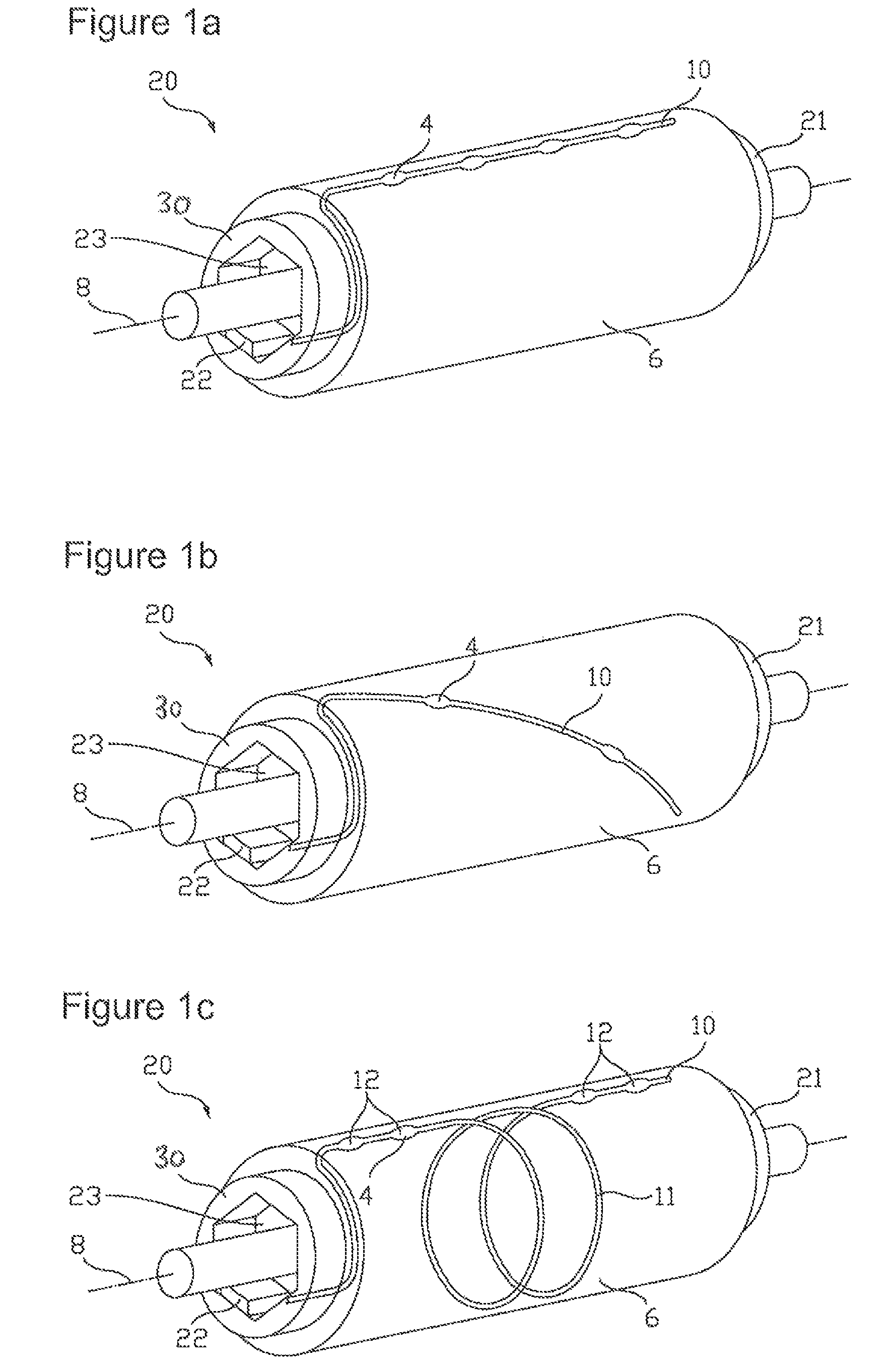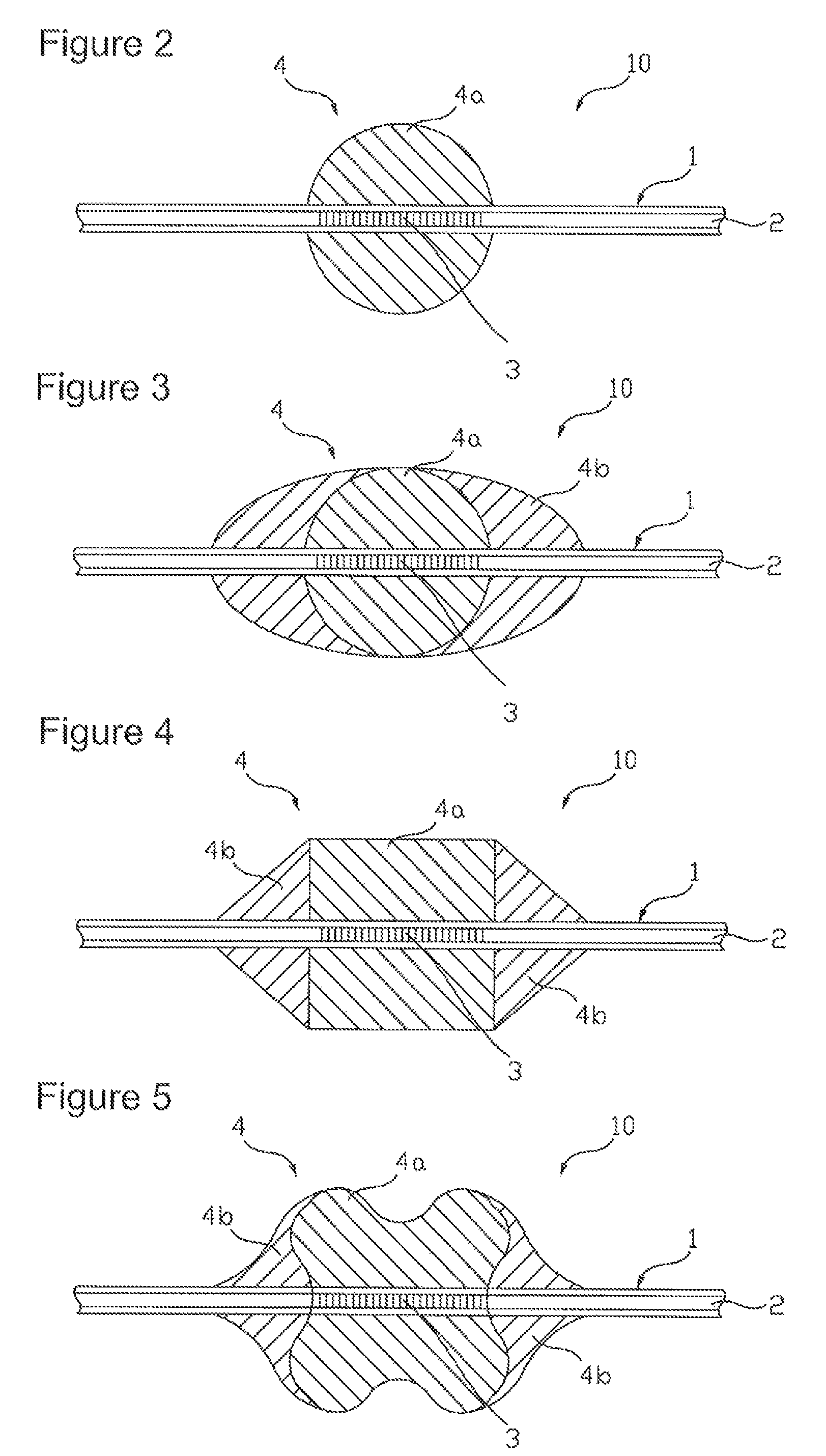Industrial roll with optical roll cover sensor system
a sensor system and optical roll cover technology, applied in the direction of instruments, force measurement by measuring optical property variation, force measurement apparatus for force/torque/work measurement, etc., can solve the problem of inability to determine the position where the optical properties of the fiber have been changed, either a constructive or destructive interference, and the respective arrangement is not practical. to achieve the effect of improving sensitivity
- Summary
- Abstract
- Description
- Claims
- Application Information
AI Technical Summary
Benefits of technology
Problems solved by technology
Method used
Image
Examples
Embodiment Construction
[0060]Referring now to the drawings, and more particularly to FIG. 1a, there is shown a schematic representation of an industrial roll 20 with an optical roll cover sensor system. The industrial roll 20 comprises a roll core 21 with a substantially circular cylindrical corpus and a roll cover 6 sheathing the major part of the corpus. The roll core 21 may be made of metal or fiber-reinforced plastics or any other suitable material used for industrial roll cores 21. The corpus of the roll core 21 may be configured with a shell having an outer surface and an internal lumen so that the roll cover 6 overlays the outer surface either in total or except for the edgewise rims. For the roll cover 6, any commonly used material like rubber, polyurethane, fiber-reinforced plastics and the like can be used.
[0061]The roll cover 6 further comprises an embedded fiber Bragg sensor 10 that is adapted to measure forces directed transverse to the longitudinal direction of the fiber 1, that is in a with...
PUM
| Property | Measurement | Unit |
|---|---|---|
| Young's modulus | aaaaa | aaaaa |
| bulk modulus | aaaaa | aaaaa |
| Young's modulus | aaaaa | aaaaa |
Abstract
Description
Claims
Application Information
 Login to View More
Login to View More - R&D
- Intellectual Property
- Life Sciences
- Materials
- Tech Scout
- Unparalleled Data Quality
- Higher Quality Content
- 60% Fewer Hallucinations
Browse by: Latest US Patents, China's latest patents, Technical Efficacy Thesaurus, Application Domain, Technology Topic, Popular Technical Reports.
© 2025 PatSnap. All rights reserved.Legal|Privacy policy|Modern Slavery Act Transparency Statement|Sitemap|About US| Contact US: help@patsnap.com



